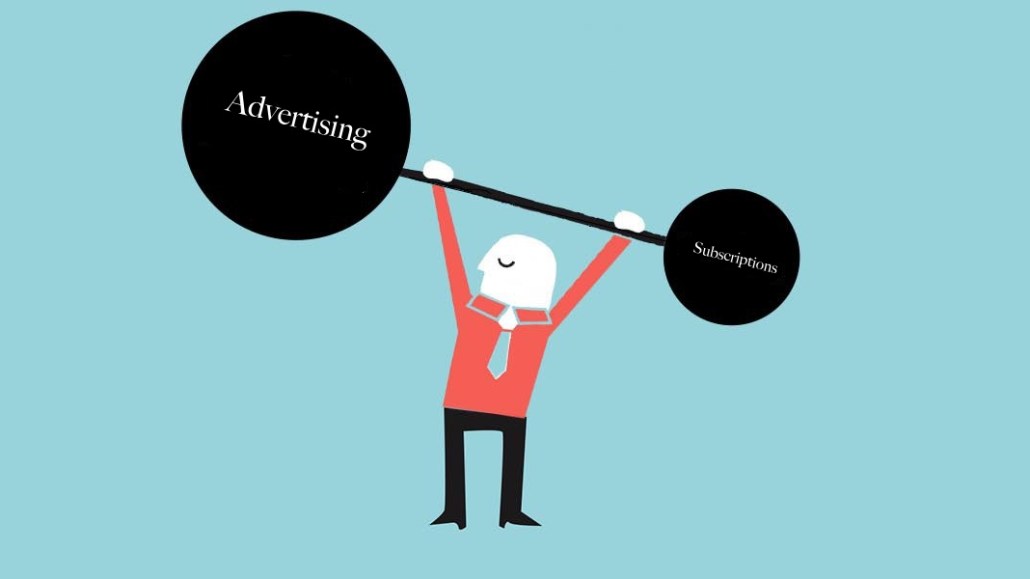Save 50% on a 3-month Digiday+ membership. Ends Dec 5.

As publisher events have been forced online, they are becoming more entrenched with other parts of the business, particularly subscriptions.
Over the last few months, virtual events have been used as an incentive for people to subscribe to publisher paid-for programs. Since launch in April, Verizon-owned TechCrunch has hosted 10 members-only investor Q&A series events, Extra Crunch Live, via its subscription tier, Extra Crunch. Most of its 2020 events are for Extra Crunch members. Extra Crunch subscriptions have increased by 600% year-on-year, the company said. Elsewhere, publishers have moved more events online. Bloomberg Media’s newest virtual event, Bloomberg Reports which focuses on the impact of coronavirus, helps attract new subscribers. One subscription publisher is seeing strong subscriber participation in its virtual events series, many of who had never been to its in-person events before.
“With the huge success we’ve had with virtual events — over a quarter of a million attendees have tuned in from over 110 countries — we’ve realized that a significant portion of our attendees were not current NYT subscribers,” said Jessica Flood, managing director, NYTLive. “We are working to engage that group over the long term in a variety of ways, including a new suite of subscriber-only virtual events launching in the coming weeks.”
The link between in-person events and subscriptions has always been there but more dimly. Often, existing subscribers have exclusive or early access to events that get them closer to editorial teams or analysts. Online, this access can be done efficiently and at scale.
Financial publishers especially have been early on the scene, building exclusive webinars and digital events to create investor communities.
For Bloomberg Media, a key benefit of its All Access subscription tier is that, as an added benefit, subscribers can attend some premier, in-person global events. With physical events on pause, virtual events are a substitute for subscribers and the broader audience to get closer to journalists via Q&As and polling.
Despite the chunk left in publisher pockets at a lack of in-person events, the wide-scale move to digital means they are more measurable. For advertisers sponsoring publisher in-person events, the model has been more proven over the years but the objectives and outcomes more at risk of being siloed.
Ad position: web_incontent_pos1
“Publishers are starting to understand and rethink the way they engage with brands, it’s no longer by channel or by tactic,” said Tessa Barron, vp of marketing at event platform ON24. “Making digital part of everyone’s responsibility is more of an organizational issue right now, those are the conversations I’m having and the educational journey we’re on with our publisher customers.”
To counter this, publishers have re-organized and set up task forces. Since mid-March, in order to pinpoint the qualities from in-person events that can be transferred online, The New York Times created a cross-departmental team of six staffers from different departments — research and development, marketing, brand, events and newsroom — to meet once a week.
Inevitably, conversations involve more stakeholders. For an online publisher client, ON24 was initially working with the events team, when it became clear they couldn’t rely on in-person events as a revenue stream and had to be recreated digitally, the conversation expanded. Instead of only the events director, the company is now speaking with the branded content team, content studio and media sales team to drive impressions once the event has aired live, as well.
Publishers are working out the wider role digital events play in their businesses going forward as advertisers become more comfortable with the format. With digital events, the whole is greater than the sum of its parts, but how subscription strategies intersect will become more clear and focused.
The FT found that subscribers who had been to physical events were more engaged online — they read more articles and visited more regularly — in the 4 months post-event than pre-event, and they remained higher.
Ad position: web_incontent_pos2
“Subscribers that come to an event interact more and last longer, there is a direct link there,” said Orson Francescone, managing director of FT Live. Although he countered that “the Holy Grail of a 100% overlap of subscribers and event attendees is a bit of a red herring.”
More in Media

Digiday+ Research Subscription Index 2025: Subscription strategies from Bloomberg, The New York Times, Vox and others
Digiday’s third annual Subscription Index examines and measures publishers’ subscription strategies to identify common approaches and key tactics among Bloomberg, The New York Times, Vox and others.

From lawsuits to lobbying: How publishers are fighting AI
We may be closing out 2025, but publishers aren’t retreating from the battle of AI search — some are escalating it, and they expect the fight to stretch deep into 2026.

Media Briefing: Publishers turn to vertical video to compete with creators and grow ad revenue in 2026
Publishers add vertical video feeds to their sites to boost engagement, attract video ad spend and compete with news creators.
Ad position: web_bfu



